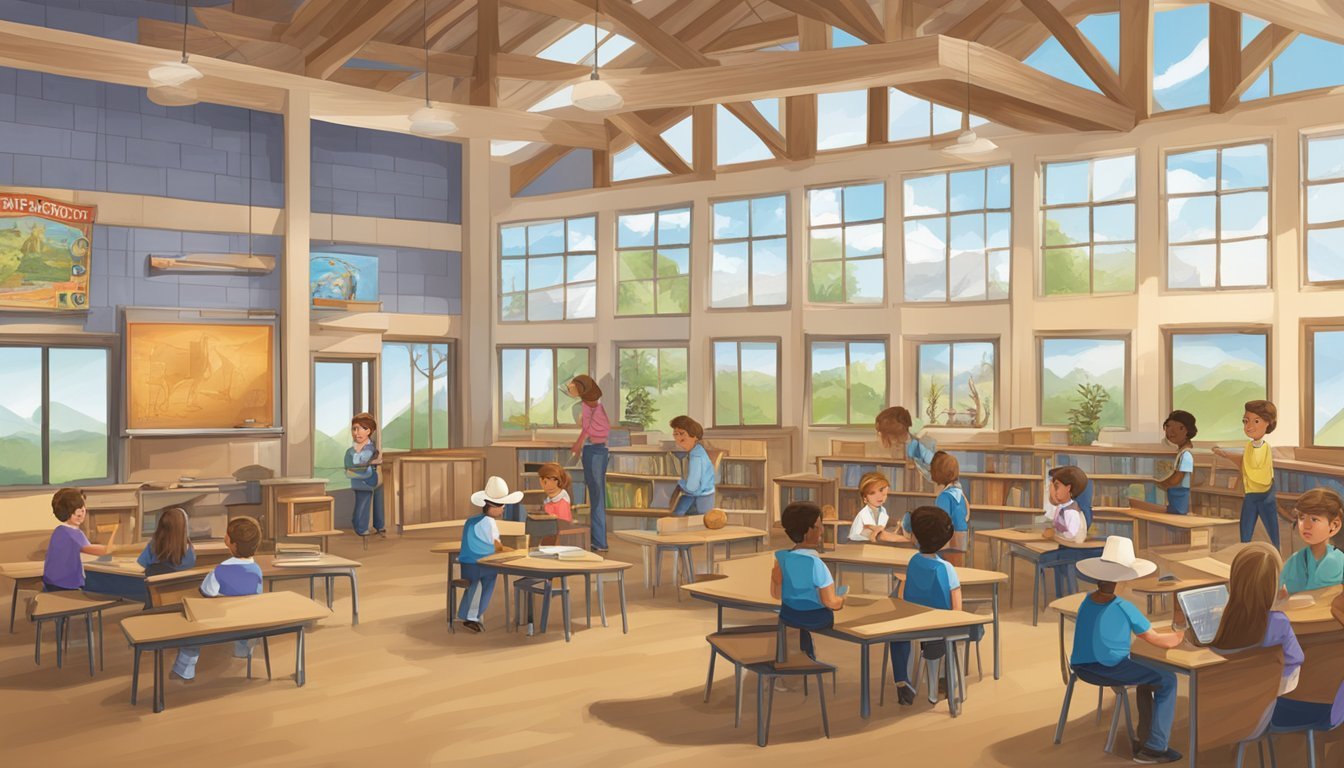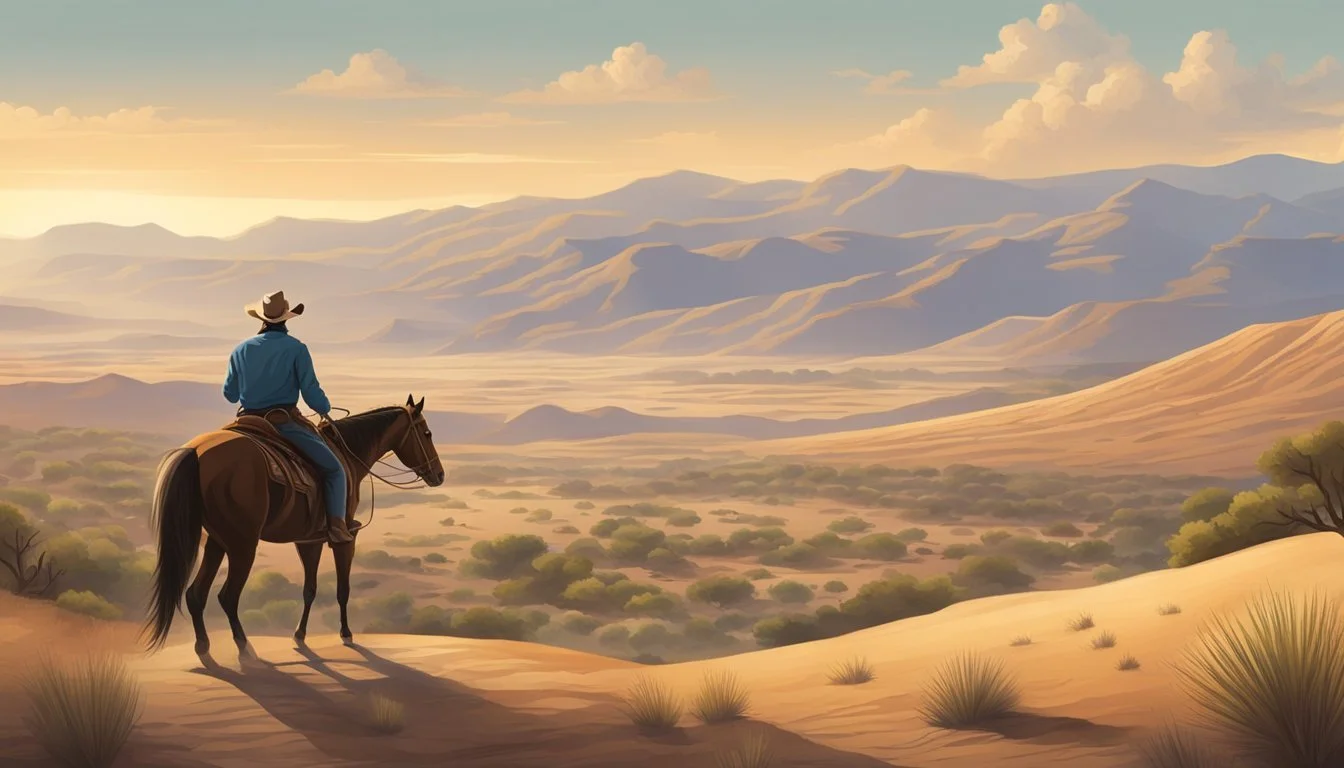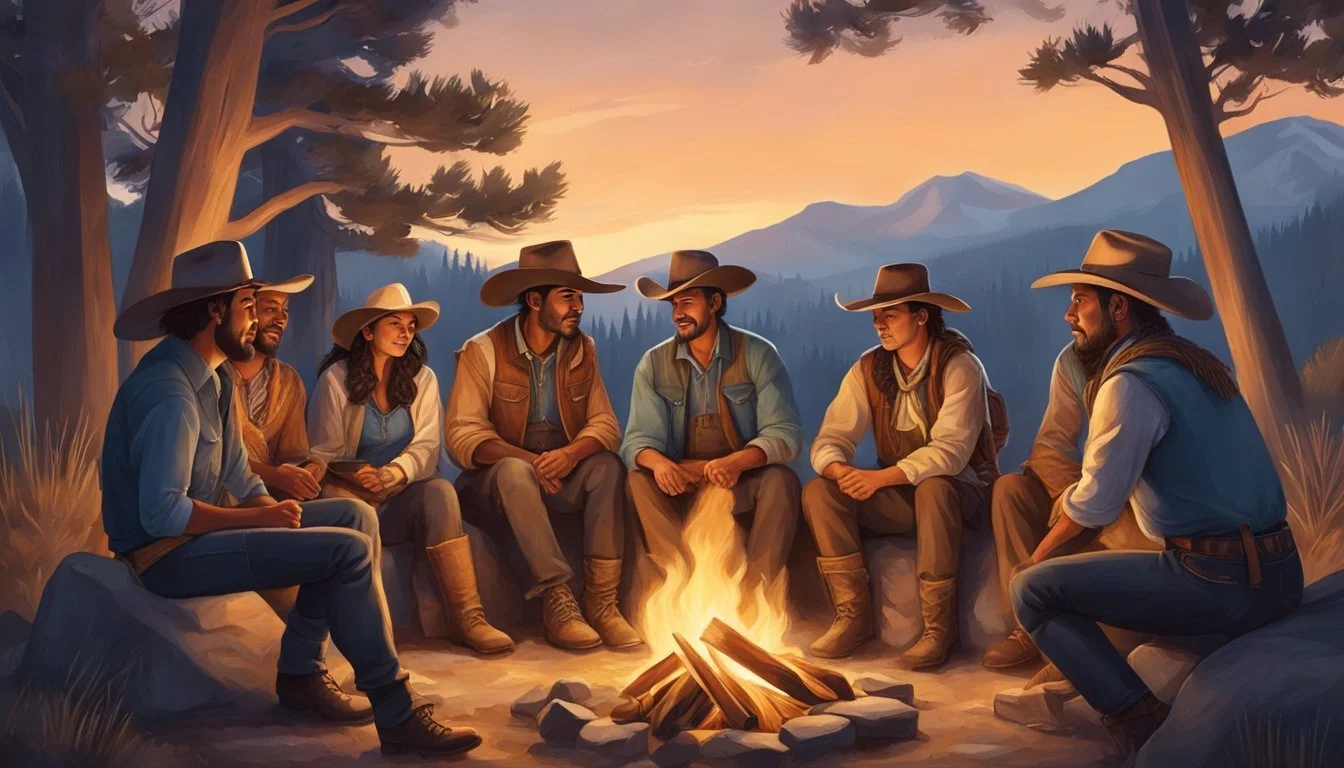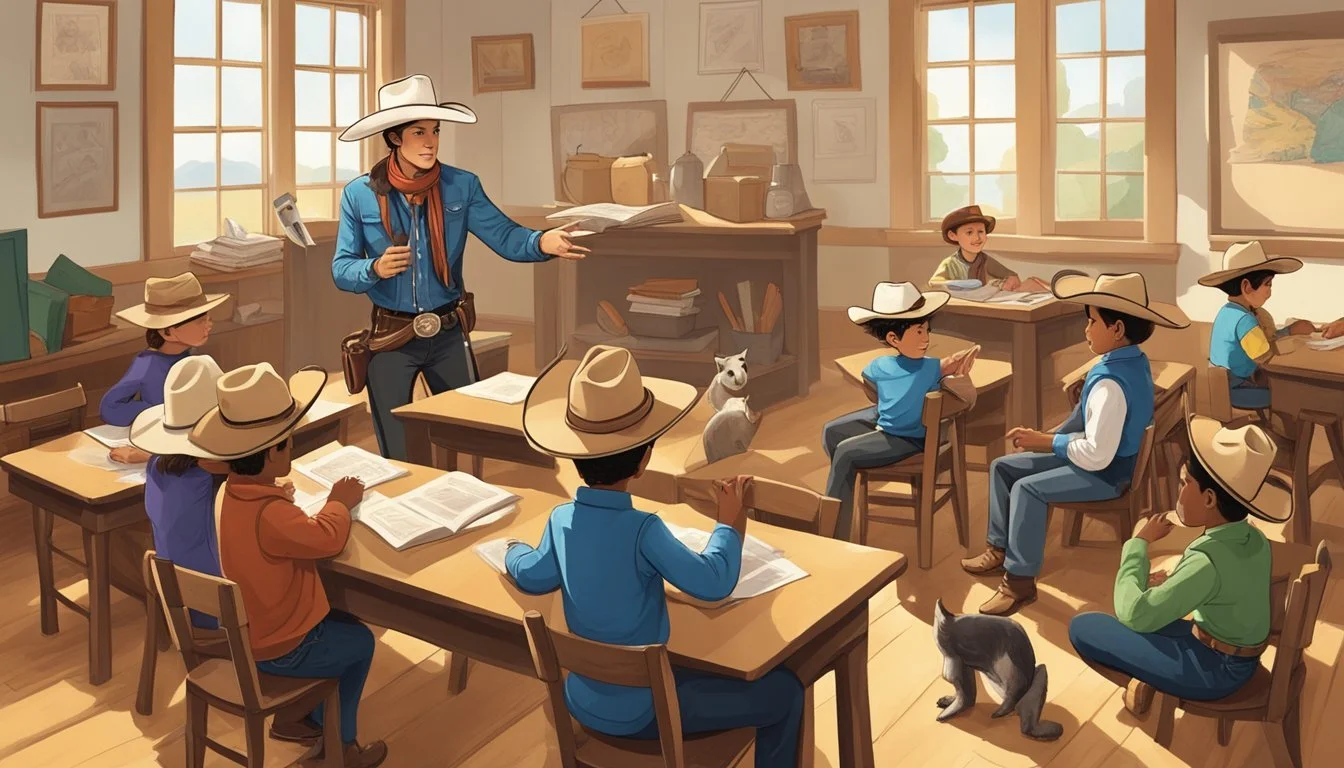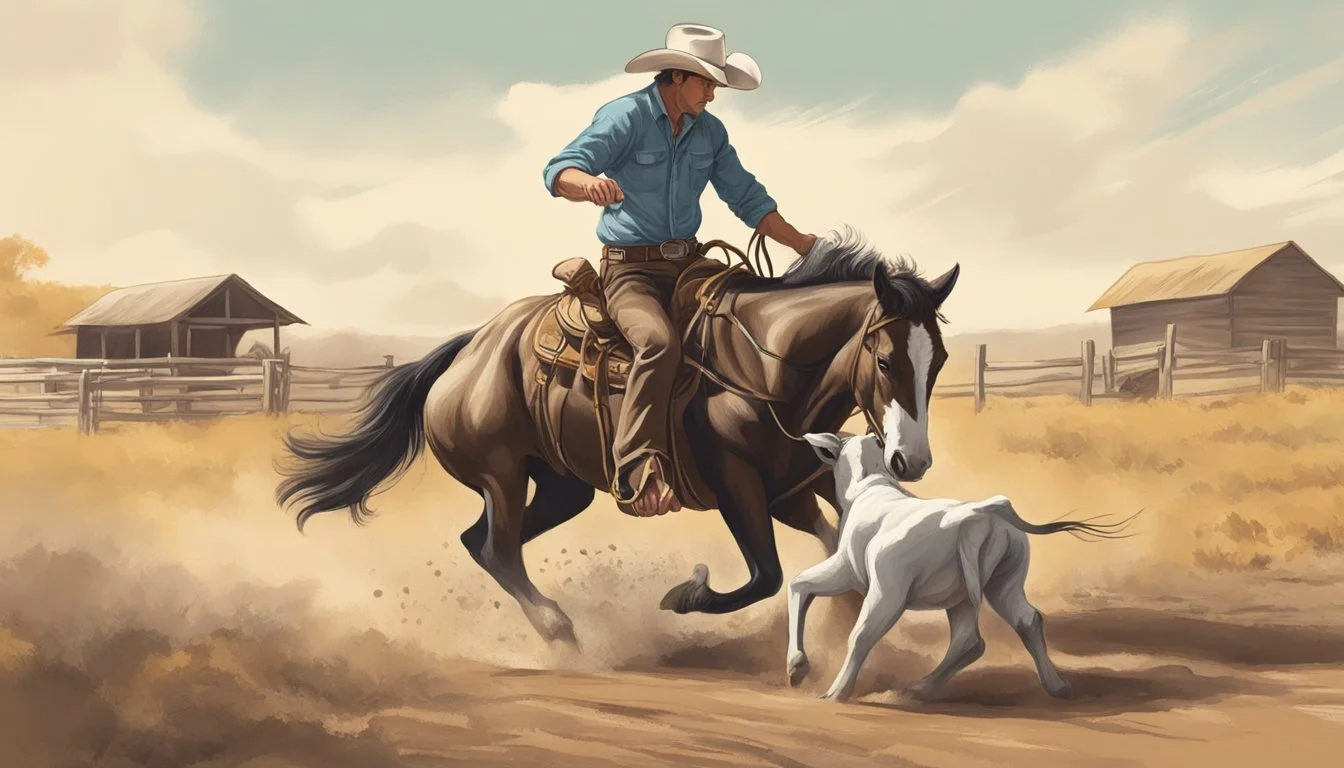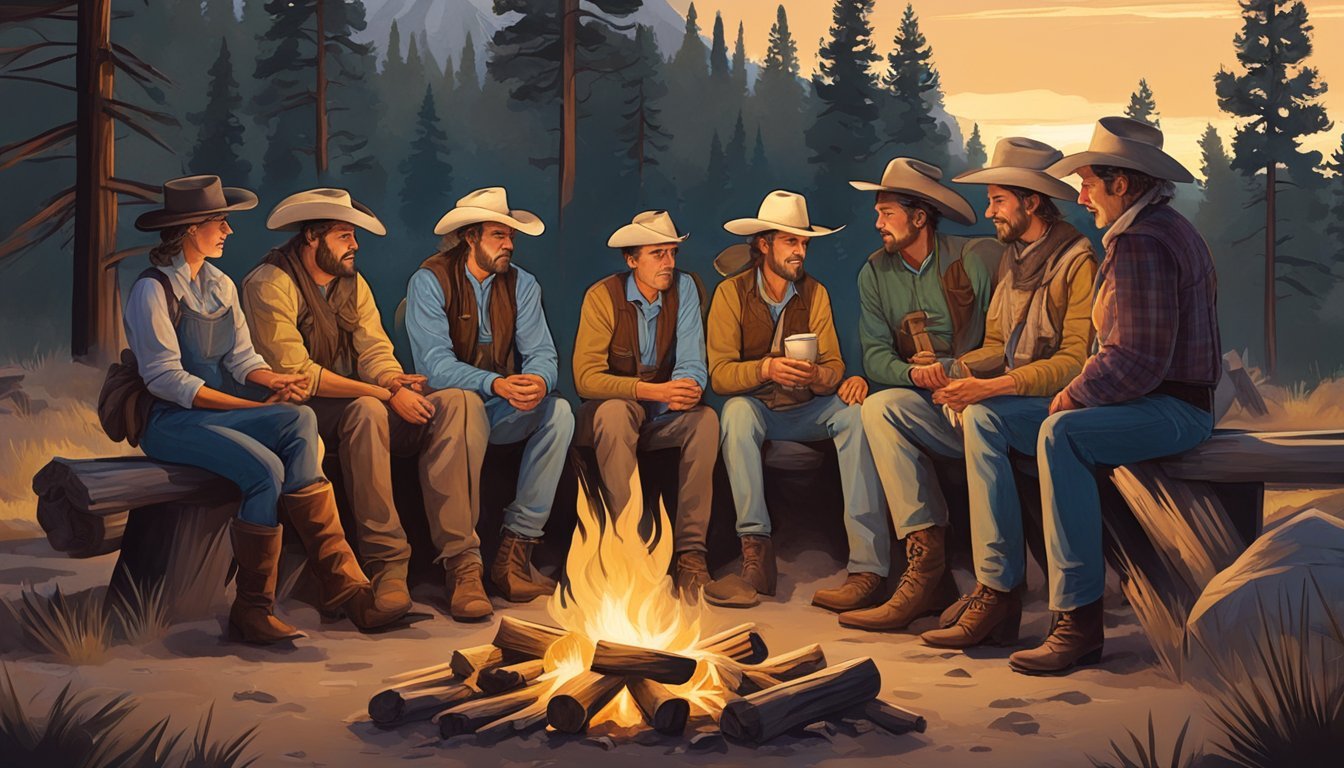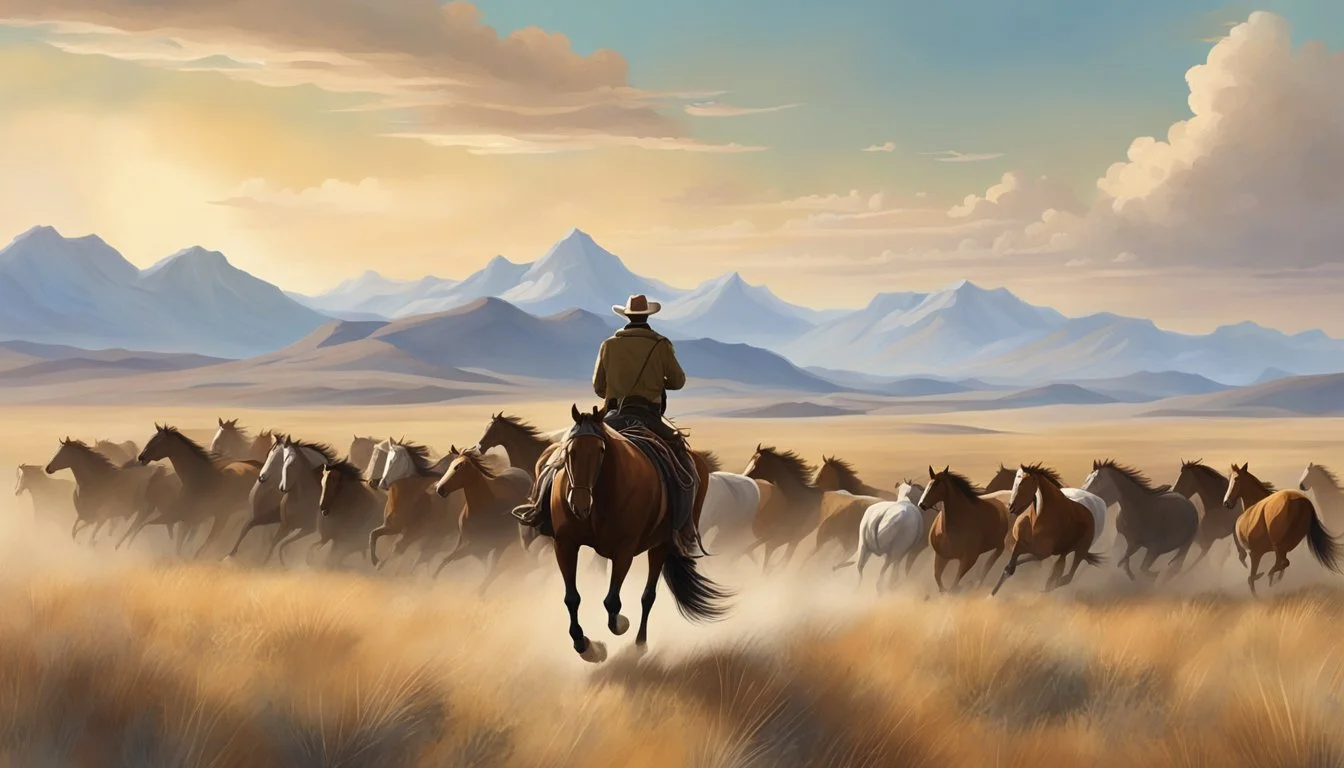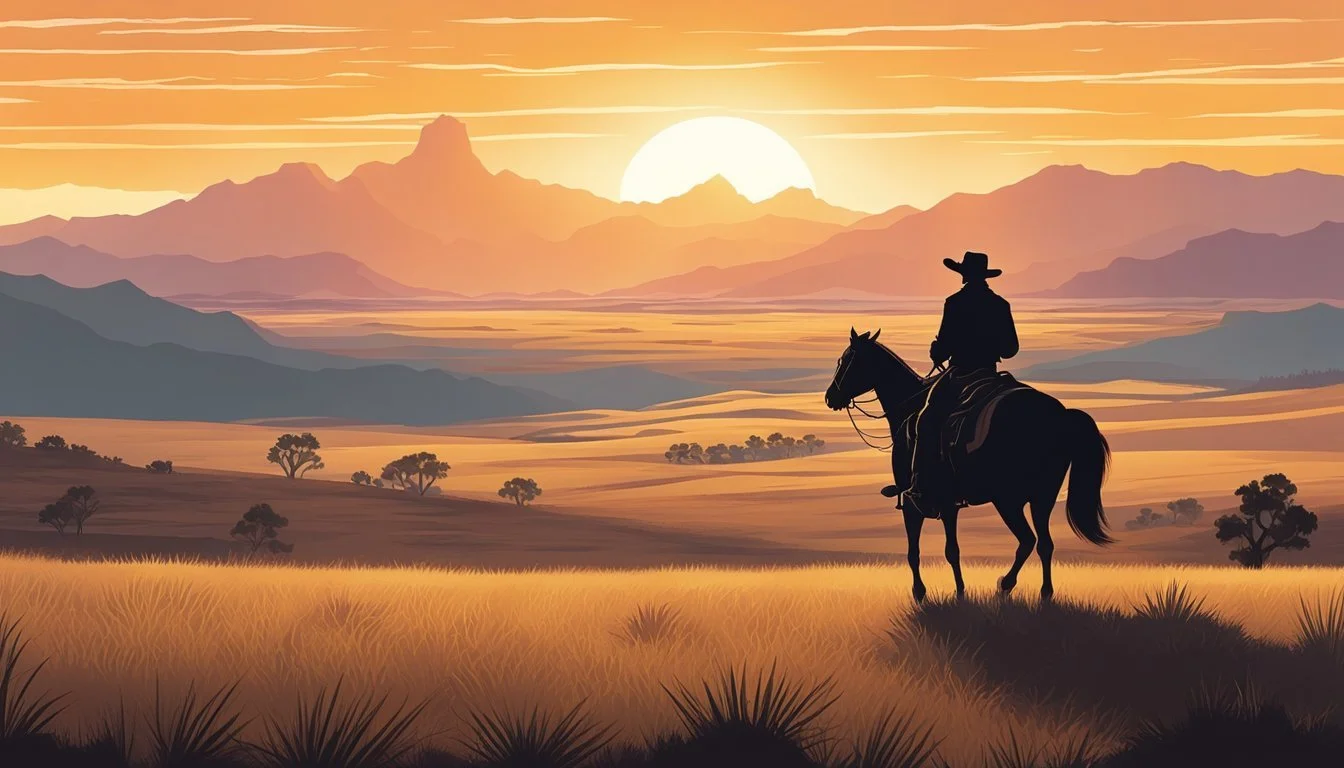The Future of Cowboy and Western Culture
Strategies for Education and Preservation
Cowboy and Western culture represents a significant chapter in American history, encapsulating the spirit of individualism and the legacy of the frontier. It's a culture that has been romanticized and celebrated in various forms of media and education, creating an image of resilience and freedom that has shaped American identity. As society progresses and evolves, the challenge lies in preserving this integral part of the nation's heritage while ensuring that the cultural depictions are respectful and historically accurate.
Education plays a critical role in perpetuating the authentic understanding of cowboy and Western heritage. Rodeo events, cowboy festivals, and museum exhibits serve as platforms to educate the public about the intricacies of cowboy life, ranching history, and the traditions of the American West. Incorporating these elements into classrooms and public discourse helps maintain a connection to the past while providing context for the evolution of these cultural symbols.
Preservation efforts by organizations and historical sites aim to safeguard the physical vestiges of cowboy and Western culture for future generations. By restoring and maintaining historical ranches, promoting traditional Western arts, and documenting the stories of the American West, these efforts help ensure that the legacy of the cowboy endures. This balance of education and preservation will likely dictate the future trajectory of cowboy and Western culture, embedding it within the broader tapestry of American history.
Historical Context of Cowboy and Western Culture
The intricate tapestry of cowboy and western culture is deeply rooted in a blend of traditions and historical influences spanning various cultures and epochs. The evolution of this culture is a testament to the adaptability and enduring spirit of the cowboy archetype.
Evolution from Early Traditions
The genesis of cowboy culture can be traced back to the vaquero traditions brought by Spanish settlers in the 1500s. These early horsemen were adept at herding cattle and introduced techniques that would define cowboy skills. As American settlers moved west, these Spanish practices were absorbed and adapted, giving birth to the cowboy as a distinct figure in American history.
Influence of Indigenous Cultures
Native American and Indigenous cultures have significantly shaped cowboy and western culture. Skills such as tracking, horse breaking, and knowledge of the terrain were crucial to the cowboy's daily life and often learned from interactions with American Indians. Additionally, elements of Native American attire, such as moccasins and buckskin clothing, were incorporated into cowboy gear due to their practicality.
Impact of Migration and Settlement Patterns
Migration and settlement patterns across the American West fueled the expansion of cowboy culture. As settlers from various backgrounds, including African American, Hispanic, and European, ventured into the frontier, they brought with them diverse cultural practices and lifestyles. This convergence created a melting pot within which the cowboy lifestyle flourished, influenced by the necessity for animal husbandry, protection of livestock, and the development of ranching communities.
Cowboy Culture in Education
Educational institutions have embraced cowboy and Western heritage as a valuable component of American history and culture, aiming to preserve this legacy through structured learning experiences.
Integrating Western Heritage into Curriculum
Schools have recognized the importance of integrating cowboy history and Western heritage into their curriculum to provide students with a comprehensive understanding of America's past. Programs may include studies of the rodeo, its significance, and its evolution. These activities often utilize primary historical sources and experiential learning methods, such as reenactments or visits to historical sites, to enrich the students' comprehension of cowboy culture.
Role of Educators and Administrators
Educators and administrators are central to the successful incorporation of Western heritage into education. They are responsible for crafting syllabi that reflect accurate historical accounts, as well as fostering an appreciation for cowboy culture. This may involve professional development opportunities and partnerships with museums—like the National Cowboy & Western Heritage Museum—to access resources and innovative solutions for engaging educational content.
Challenges in Modern Education Systems
Modern education systems face challenges in preserving cowboy culture due to the evolving nature of curricula and varying levels of interest in this history. Balancing technological advancements with traditional teaching methods remains a complex issue. Meanwhile, ensuring that the portrayal of cowboy culture remains neutral and knowledge-based, rather than mythologized, is another ubiquitous challenge. It requires constant effort to keep educational materials up-to-date and relevant.
Preservation of Western Traditions
The preservation of Western traditions necessitates diligent effort across various platforms including community action, institutional support, and national recognition. These initiatives ensure that cowboy and Western culture retains its place within America’s diverse cultural tapestry.
Community Involvement and Continuity
Community involvement plays a crucial role in the transmission of Western traditions. Dedicated individual and group efforts facilitate the continuity of practices such as rodeos, cowboy poetry, and traditional schooling in ranching skills. Heritage festivals and local gatherings not only celebrate the culture but also instill a sense of pride and respect for historical knowledge among young members of the community. They serve as a bridge connecting the rich past to a living present.
Museums and Cultural Institutions
Museums and cultural institutions are instrumental in the preservation and education of Western history. For instance, the Sid Richardson Museum exhibits art that narrates the story of cowboys and Native Americans. These entities curate and display artifacts, provide educational programs, and support research that enhances the public’s understanding and appreciation of cowboy culture. They act as repositories for tangible connections to the past, safeguarding attire, equipment, and artwork that echo the era’s spirit.
Recognition of Intangible Cultural Heritage
The recognition of intangible cultural heritage is vital for safeguarding the non-physical aspects of cowboy culture. This includes the skills of cattle herding, horse riding, roping, and oral traditions like cowboy poetry. Entities like UNESCO play a role in acknowledging and protecting this heritage at a global level. The National Heritage Fellowship has recognized individuals for their contributions to preserving these traditions, demonstrating the importance of cultural diversity and historical continuity within the fabric of American society.
Cultural Representation and Identity
Cultural representation and identity within cowboy and western culture are vital in its education and preservation, focusing on fashion, language, and the arts as pivotal elements.
Fashion and Dress as Symbols
Cowboy fashion has long stood as a symbol of resilience and functionality. Stetson hats, boots, and belt buckles serve not only practical purposes but also signify a rugged American identity. Hispanic influences are evident in the intricate embroidery of the vaquero, while French contributions are seen in the adapted designs of New Orleans-style Mardi Gras outfits, reflecting the diversity within the culture.
Cultural Expressions in Language and Literature
The cowboy lexicon is rich with terms that stem from American, Hispanic, and French origins. Phrases like "lasso" from the Spanish "lazo" and "chaps" from "chaparreras" illustrate the linguistic melding. In literature, cowboy poetry and stories chronicle the trials and triumphs of the frontier life, preserving the language and narratives that have shaped their cultural identity.
The Virginian by Owen Wister
Lonesome Dove by Larry McMurtry
Poetry of Waddie Mitchell
Art and Music as Forms of Historical Documentation
Art and music within cowboy culture act as historical documentation. Iconic images such as Frederic Remington's sculptures capture the dynamic essence of the cowboy, while country music often pays homage to western themes, immortalizing the spirit and hardships of cowboy life through song. Hispanic corridos and French ballads also find their resonance in the fabric of the western narrative, contributing to a more comprehensive cultural tableau.
Contemporary Issues and Innovations
The progressive transformation of cowboy and western culture reflects a dynamic interplay between contemporary challenges and forward-thinking solutions in educational and preservation spheres.
Equality and Hierarchical Structures
Equality within cowboy culture is gaining momentum, challenging traditional hierarchical structures that often marginalized women and people of color. Educational initiatives, such as exhibitions and public programs, consciously spotlight these diverse contributors to the narrative of the West. For instance, the inclusion of artwork from a variety of backgrounds works to redefine cowboy culture as more inclusive and equitable.
Cultural Adaptation and Economic Contexts
The economic vitality of cowboy culture relies on its ability to adapt to changing cultural and financial landscapes. Modern education in this field not only covers historical significance but also incorporates economic considerations. This encompasses recognizing the impact of tourism, contemporary ranching practices, and entertainment on sustaining the cultural heritage.
Future Prospects and Innovative Solutions
Education and preservation efforts hold great potential for integrating technological innovations to ensure cowboy and western culture continues to thrive. Interactive exhibits, digital archives, and virtual reality experiences promise to make this cultural heritage more accessible and engaging for future generations. These innovative solutions are poised to maintain the relevance of cowboy culture in a rapidly evolving society.
Cowboy Skills and Practices
Cowboy skills are instrumental to the Western heritage, serving both practical and cultural purposes. From roping techniques to cattle management, these practices are pivotal in contemporary ranch operations and educational initiatives aiming to preserve these traditional skills.
Roping Techniques and Cattle Management
Rope types and uses:
Lasso: Long, noosed rope used for catching cattle.
Bola: Rope with weights, traditionally used to entangle animals' legs.
Skills and techniques employed in cattle management are deeply rooted in the knowledge passed down from generations of cowboys. Today's cowboys use a blend of time-honored skills and modern advancements for herding and managing cattle.
Key techniques:
Quick catch: A method where a cowboy swiftly ropes a calf by the neck or feet during branding or medical treatment.
Team roping: A collaborative effort where one cowboy ropes the head of the cattle and another ropes the hind feet, showcasing coordination and communication crucial in the cattle industry.
Preserving Legacy Skills in Modern Contexts
Efforts to keep cowboy skills alive involve various educational programs and preservation associations. They focus on training individuals in historical practices while ensuring their relevance to modern ranching needs.
Initiatives like cowboy skill workshops and rodeo educational programs play a significant role in this preservation.
Competitions not only test a cowboy's ability but also serve to maintain and showcase the cultural traditions of roping and herding.
By integrating classic cowboy practices into the present-day cattle industry, the bridge between past and future is maintained, honoring the cultural significance of these living skills.
Social Dynamics and Community Building
Understanding the social dynamics and community building within cowboy and Western culture demands a look at modern communities' roles and the reciprocal interactions between diverse populations associated with this culture.
Modern Cowboy Communities and Their Roles
Modern cowboy communities serve as custodians of the historical and cultural legacy of the American West. They are pivotal in education and the preservation of traditional practices, often involving community events like rodeos, which, as noted, enhance community participation through sponsorship and volunteerism. The modern cowboy’s role extends beyond cattle herding to participating in preserving their heritage, engaging in educational outreach, and fostering social cohesion through events and gatherings that underscore the importance of their shared history and values.
Education: Through initiatives such as scholarships and in-class presentations, cowboy communities contribute to the educational landscape.
Preservation: Maintaining the traditions of rodeo and Western heritage plays a crucial role in the continuity of cowboy culture.
Community Events: Rodeos and exhibitions, such as the one at the Briscoe Western Art Museum, provide platforms for communal interaction and cultural exchange.
The Interactions Across Diverse Populations
Cowboy and Western culture has been influenced by a variety of cultural groups, including indigenous peoples and marginalized communities, contributing richly to the tapestry of the American West. The interaction between modern cowboy communities and these diverse populations is multifaceted, ranging from the integration of indigenous motifs into cowboy artistry to the acknowledgement of historical contributions by various ethnic groups to ranching and rodeo culture.
Cultural Diversity: The fusion of different cultural elements into cowboy culture reflects the diversity of the American West.
Social Interactions: These communities play an essential role in opening dialogues, encouraging inclusivity, and recognizing the contributions of all groups to this shared identity.
Cultural Representation: Contemporary exhibitions and community events ensure that the contributions of indigenous and marginalized groups are visible and acknowledged.
Global Perspectives on Western Culture
Western culture, with its interdisciplinary approach, has profoundly influenced global culture and media, forging dynamic exchanges and shaping international perceptions.
International Influence and Exchange
Cowboy and Western culture are no longer confined to the geographical boundaries of the American West but have evolved into a global phenomenon. Japan, for example, has helped rejuvenate Western motifs in cinema and other art forms. This cultural exchange flows both ways, as Cowboy Bebop and Trigun are Japanese series that draw heavily on Western aesthetics and have, in turn, influenced Western media.
Influences in Popular Culture:
Music: Country-Western music has seen a resurgence, gaining popularity on platforms like TikTok.
Fashion: Iconic cowboy apparel—such as boots and hats—has been adopted internationally.
Recreation: Rodeo and other cowboy-related sports have found audiences worldwide.
Western Culture and Global Media
Western culture has become ingrained in global media, with its narratives and iconography being universally recognized. The cowboy image serves as a symbol of rugged individualism and has been integral to the branding of America. Interdisciplinary fields such as film studies, literature, and sociology examine the Western cowboy's influence.
Global Media Channels:
Cinema: Western films contribute to the mythologizing of American history.
Literature: Tales of cowboys and pioneers have been disseminated globally.
Digital Media: Western themes resonate in video games and online spaces.
Academic and Scholarly Contributions
Scholarship on cowboy and western culture has produced rigorous debates and a rich library of works that analyze and preserve the mythos and realities of the American West.
Essays and Critiques on Western Narrative
Academic essays frequently dissect the dichotomy between historical realities and mythical representations of cowboys. They explore themes like the influence of media on public perception and the role of western culture in American identity. For instance, critiques might address how figures portrayed in media, from the silver screen to video games like Red Dead Redemption 2, contrast with true historical accounts.
Notable Essay Collections:
Cowboys and the Wild West: An Anthology of Criticism
Echoes of the Frontier: Scholarly Perspectives on Western Myths
Bibliography of Key Works and Authors
The scholarly conversation on western culture is underpinned by an extensive bibliography that spans from classic analyses to contemporary studies. Owen Wister, often cited as the "father" of western novels, features prominently thanks to works like The Virginian. Additionally, historians and academics contribute to the discourse, with professors of history compiling bibliographical guides that chart the evolution of cowboy culture and its ongoing impact.
Essential Bibliographic References:
Wister, Owen. The Virginian.
American Cowboys: Bibliography of Historical Scholarship
Scholars continue to examine the myriad facets of cowboy culture, ensuring its preservation and ongoing relevance in educational curricula.
Legal and Political Aspects
The realm of cowboy and western culture preservation intersects critically with legal frameworks and political advocacy. Laws and regulations can greatly influence the conservation of heritage sites and the perpetuation of traditions.
Policies Affecting Preservation of Heritage
Government policies play a vital role in protecting the historical landmarks and cultural practices that define cowboy culture. Legislation such as the National Historic Preservation Act (NHPA) ensures that significant historical places are identified and conserved. Cultural heritage protection is further supported by agencies like the National Park Service, which oversees national heritage areas and historic preservation programs.
State laws also impact heritage conservation. They may provide tax incentives for the restoration of historic structures or land use regulations safeguarding places of cultural significance. Educational programs receive benefits from such policies, integrating heritage into curriculums to foster appreciation among younger generations.
Advocacy for Recognition and Rights
Advocacy groups work toward recognizing the influence cowboy culture has had on American history and its ongoing socio-political relevance. These organizations frequently lobby for:
Cultural Recognition: Seeking acknowledgment of the cowboy's role in shaping the nation's identity.
Legal Rights: Protecting intellectual property rights over cultural symbols and practices.
Freedom to Practice Traditions: Fighting for the right of individuals to maintain and share cultural practices without undue restriction.
Political Support: Encouraging legislators to understand the value of cowboy culture and to act in its best interests.
Groups such as the Western Folklife Center exemplify these efforts by promoting the stories and voices of the American West through exhibitions, performances, and educational programs. They highlight the blend of different cultural legacies, including those of Native Americans, which have collectively contributed to this iconic aspect of American heritage.
Conclusion
Cowboy and western culture has long been an integral part of America's heritage, often symbolizing the spirit of freedom and individualism. In terms of education and preservation, this culture continues to be celebrated and kept alive through various means. Educational initiatives play a critical role, with schools and community programs often incorporating the history and values of the cowboy ethos into their curricula.
Furthermore, cultural preservation efforts are seen through institutions such as museums and historical societies that focus on the cowboy legacy. These organizations work tirelessly to maintain artifacts, stories, and traditions, ensuring that the essence of this unique lifestyle is passed down to future generations.
Innovation also finds its place in the preservation of cowboy culture, with contemporary media, such as films and digital content, inspiring a new audience's interest. Modern reinterpretations and adaptations allow the cowboy narrative to evolve while still upholding the core principles of the cowboy way of life.
As society progresses, educational and preservation efforts must adapt to ensure that cowboy and western culture remains a relevant and celebrated part of American history. Through deliberate and thoughtful engagement across generations, the essence of the cowboy can continue to inform and enrich the American cultural landscape.

